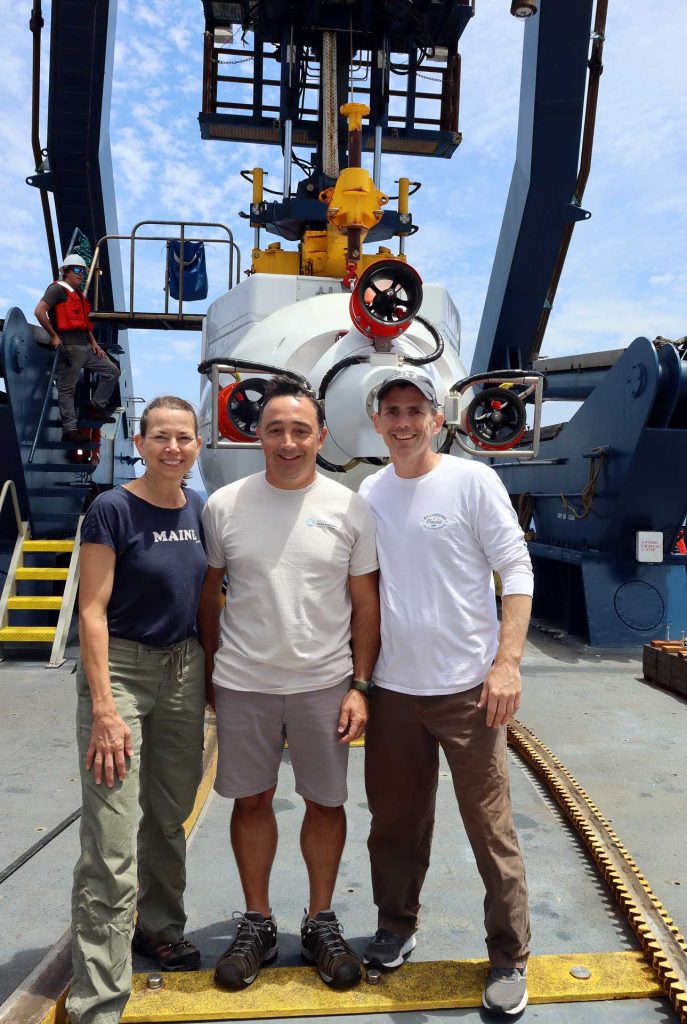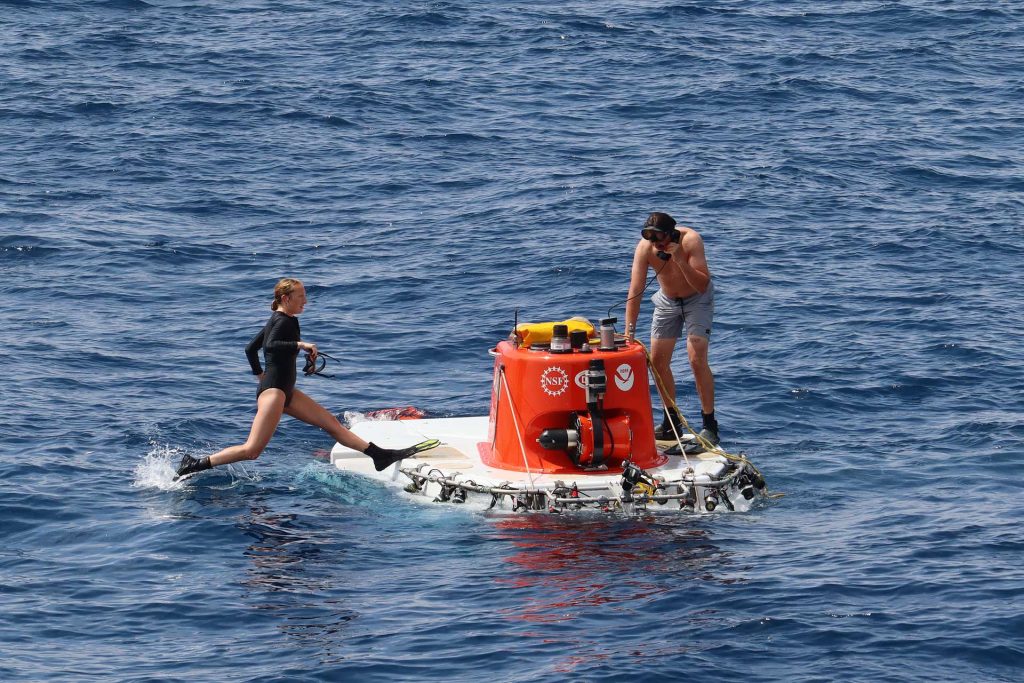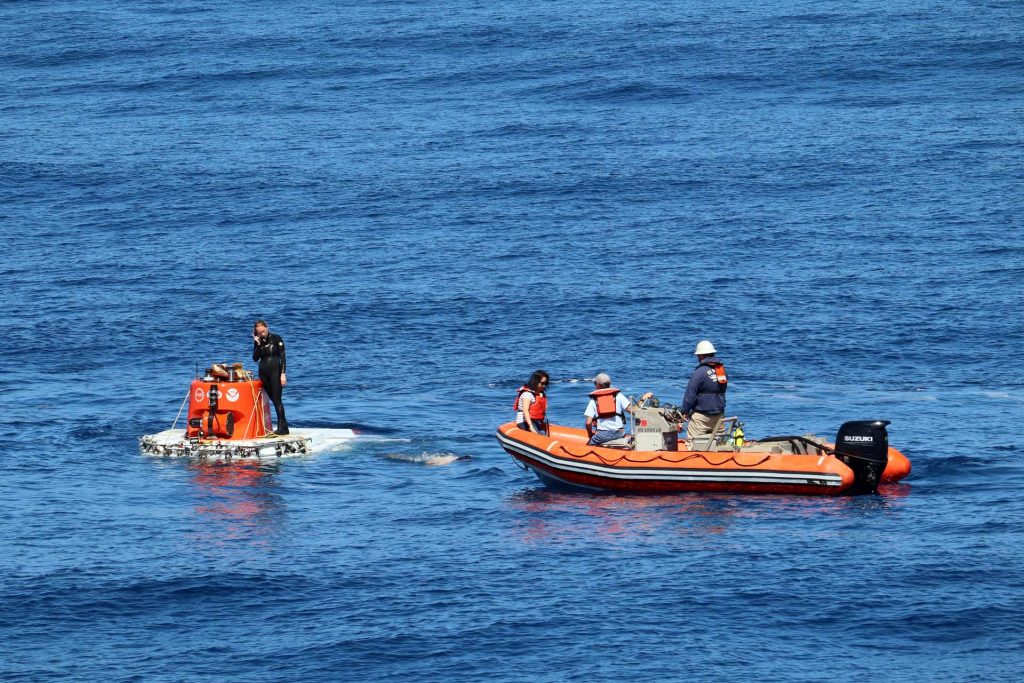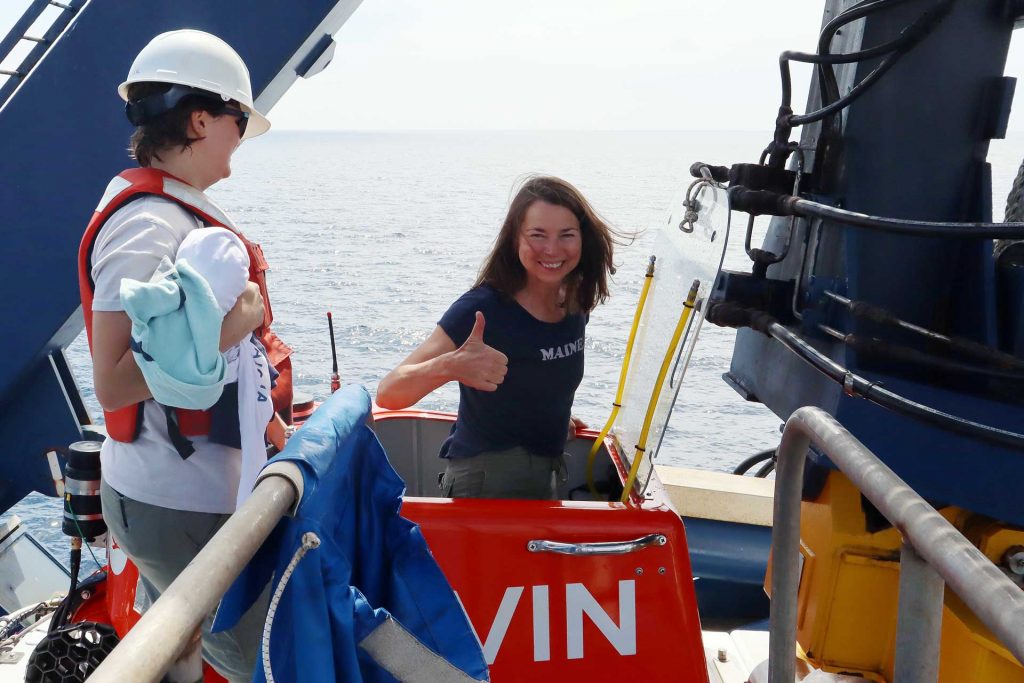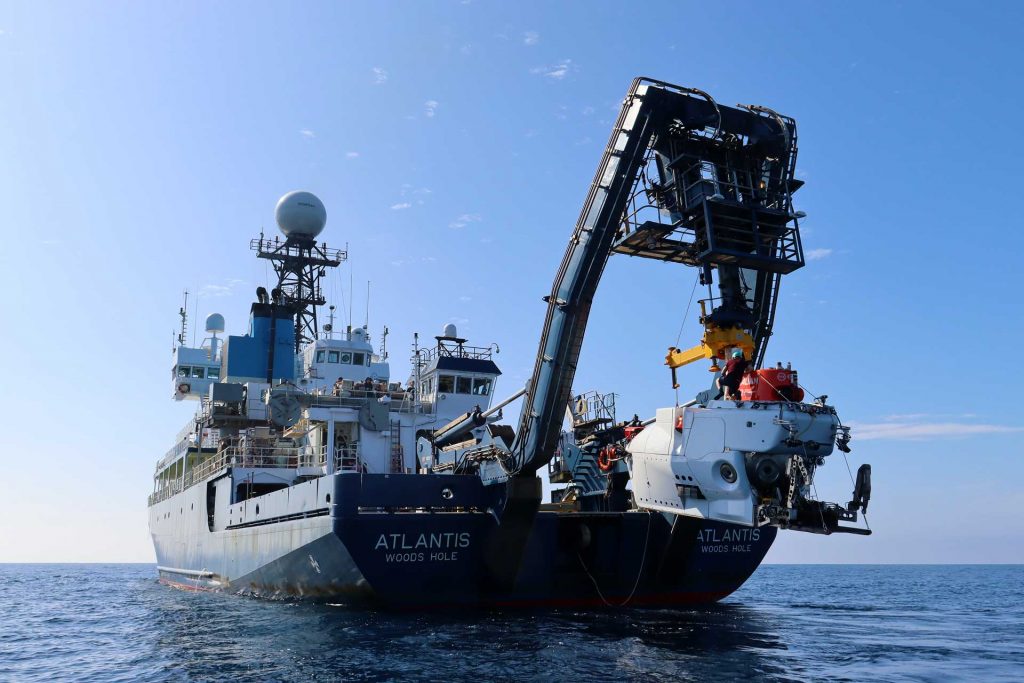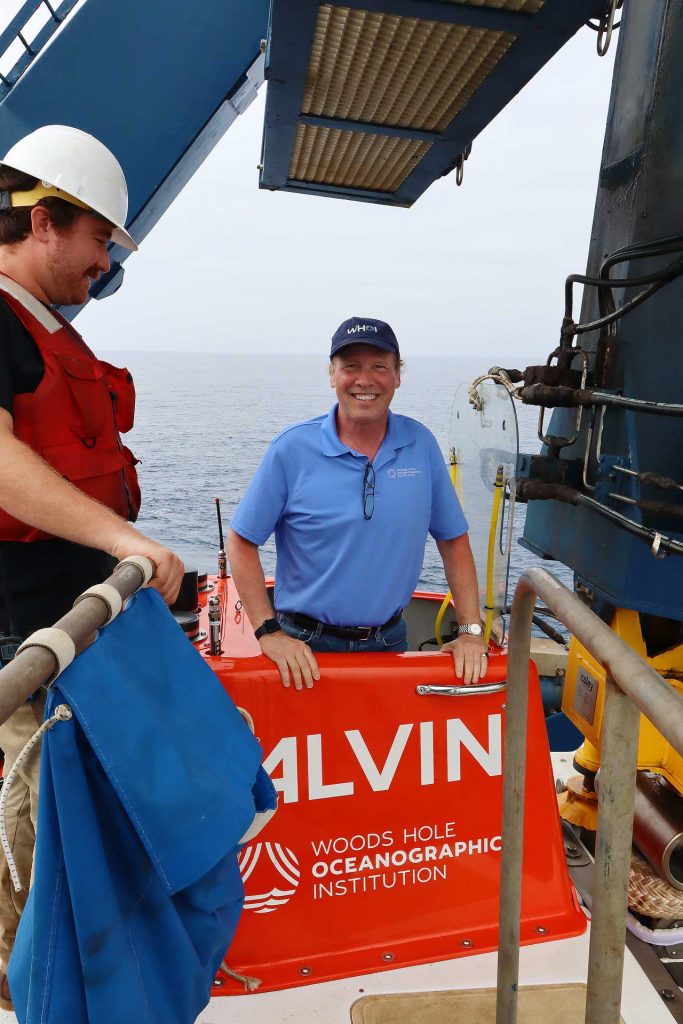Eleven new Alvin divers!
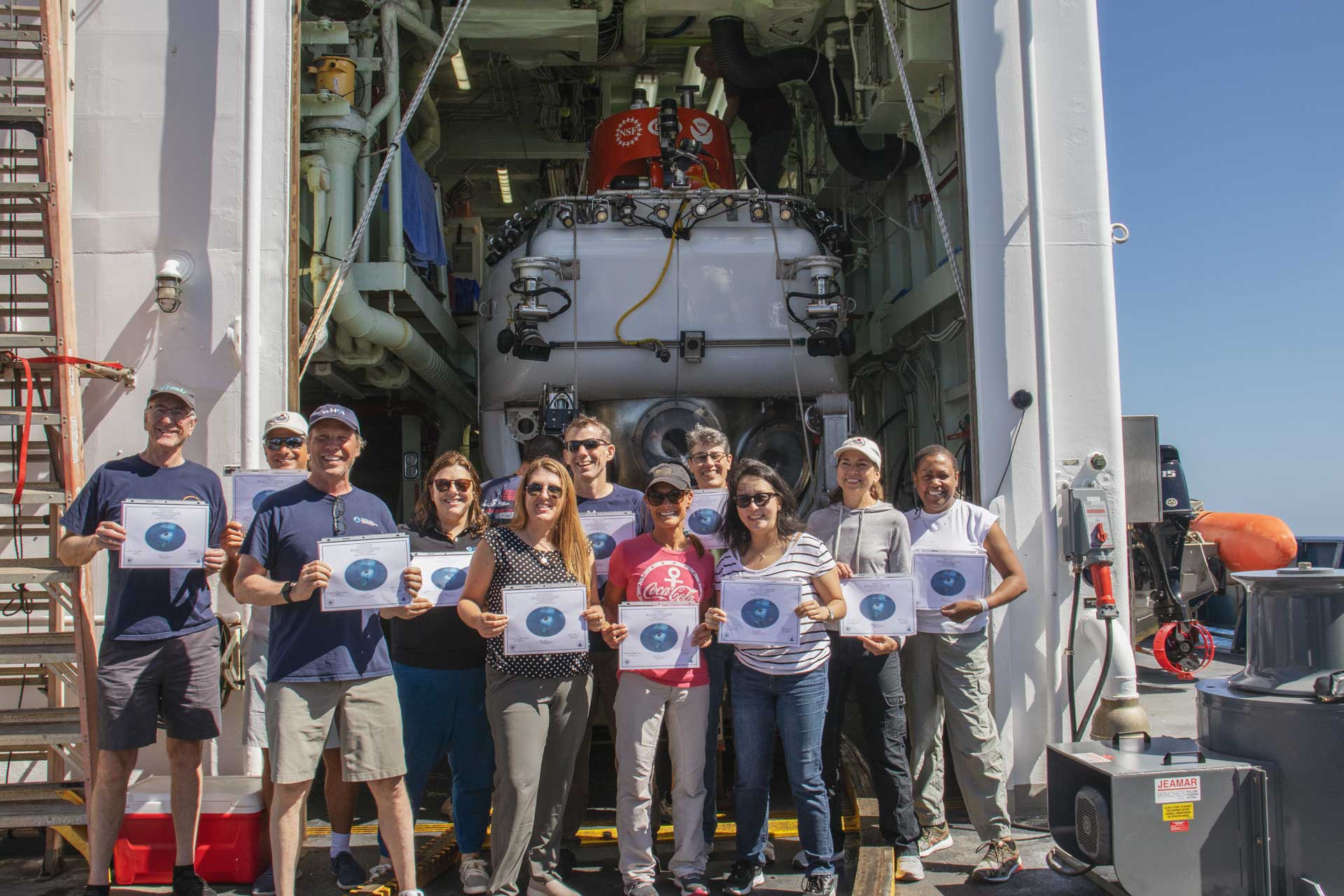
Summer engineering dives give funding agency representatives an immersion in Alvin operations
In August, the Office of Naval Research (ONR) sponsored three days of engineering dives with human-occupied vehicle Alvin off the coast of San Diego, California. The vehicle team and crew of R/V Atlantis took federal agency representatives from the National Science Foundation, ONR, NAVSEA, Office of Management and Budget, National Oceanic and Atmospheric Administration, and WHOI leadership on a short expedition to demonstrate the intricate operations and rigorous protocols that enable safe scientific submersible operations.
With six dives in fifty hours, the expedition was an unusual one, in contrast to Alvin’s science dives which often span daylight hours. Most dives explored a sunken WWII plane that rests on the seafloor at 520 meters deep.
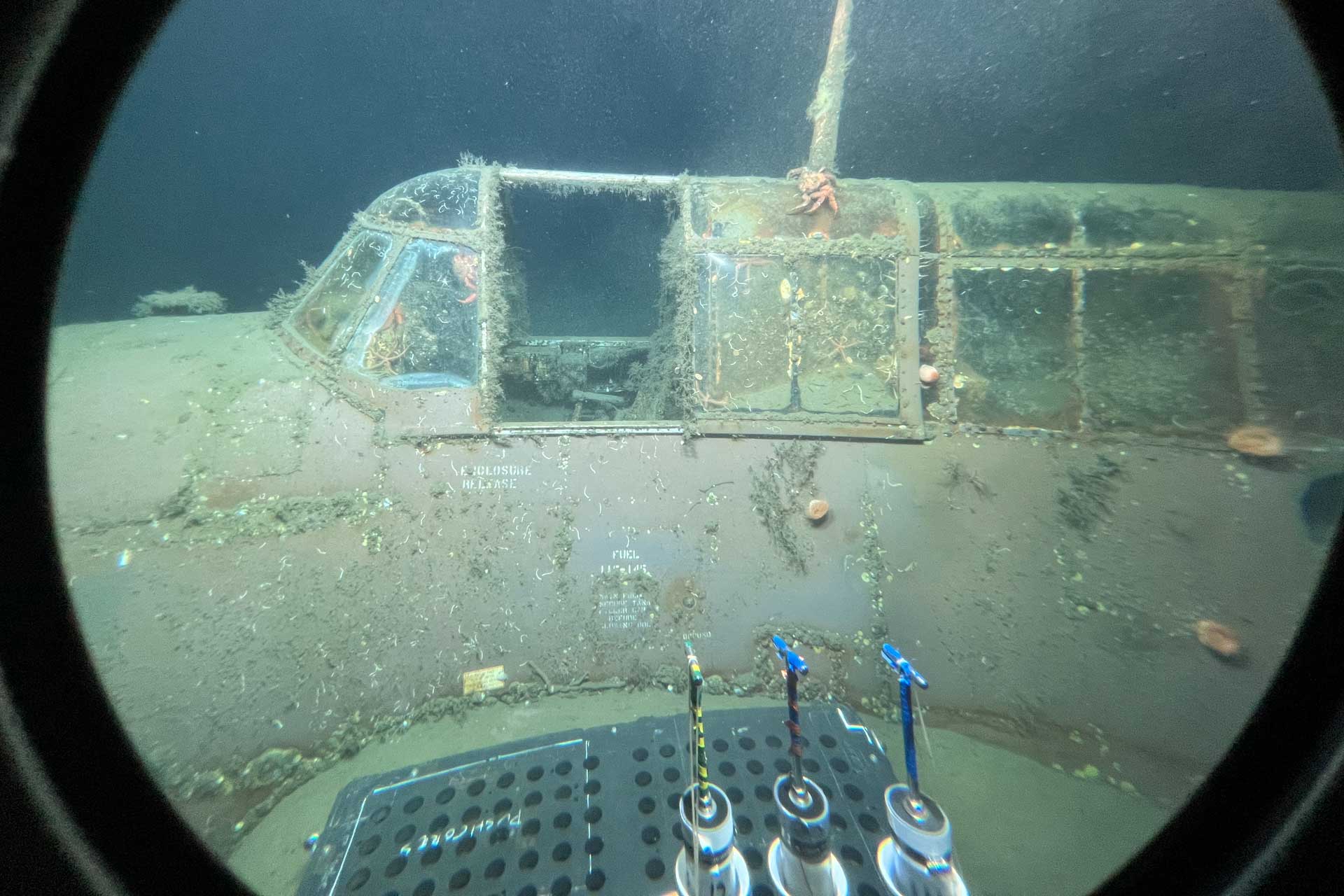
One of the first-time divers was WHOI president and director Peter de Menocal. “Diving in Alvin was such an amazing experience," he said after the research submersible returned safely. "Two big takeaways for me: there is no substitute for 'being there' in person, and this is only possible due to the commitment and professionalism of the Alvin Team.”
Lisa M. Radocha, NAVSEA’s executive director in the program executive office, attack submarines, was another first-time diver. “It was inspirational to witness the deep knowledge, tremendous enthusiasm, and steadfast commitment of these teams as they operate in the most austere and challenging of environments,” Radocha said referencing the partnership of WHOI, the Navy, NSF, and NOAA. “They are advancing our knowledge of the oceans across a spectrum of important efforts and their work continues to be invaluable to our understanding of undersea domain that is critical for our submarine forces.”
“Bringing members of our funding agencies on board Atlantis during actual Alvin operations was an opportunity to demonstrate how the team works,” said Anna Michel, WHOI chief scientist for deep submergence and chief scientist for this expedition. “The whole ship crew and vehicle team are involved. Every person who dives receives in depth safety training. And I think it really demonstrated the importance of sending humans into the deep ocean.”

